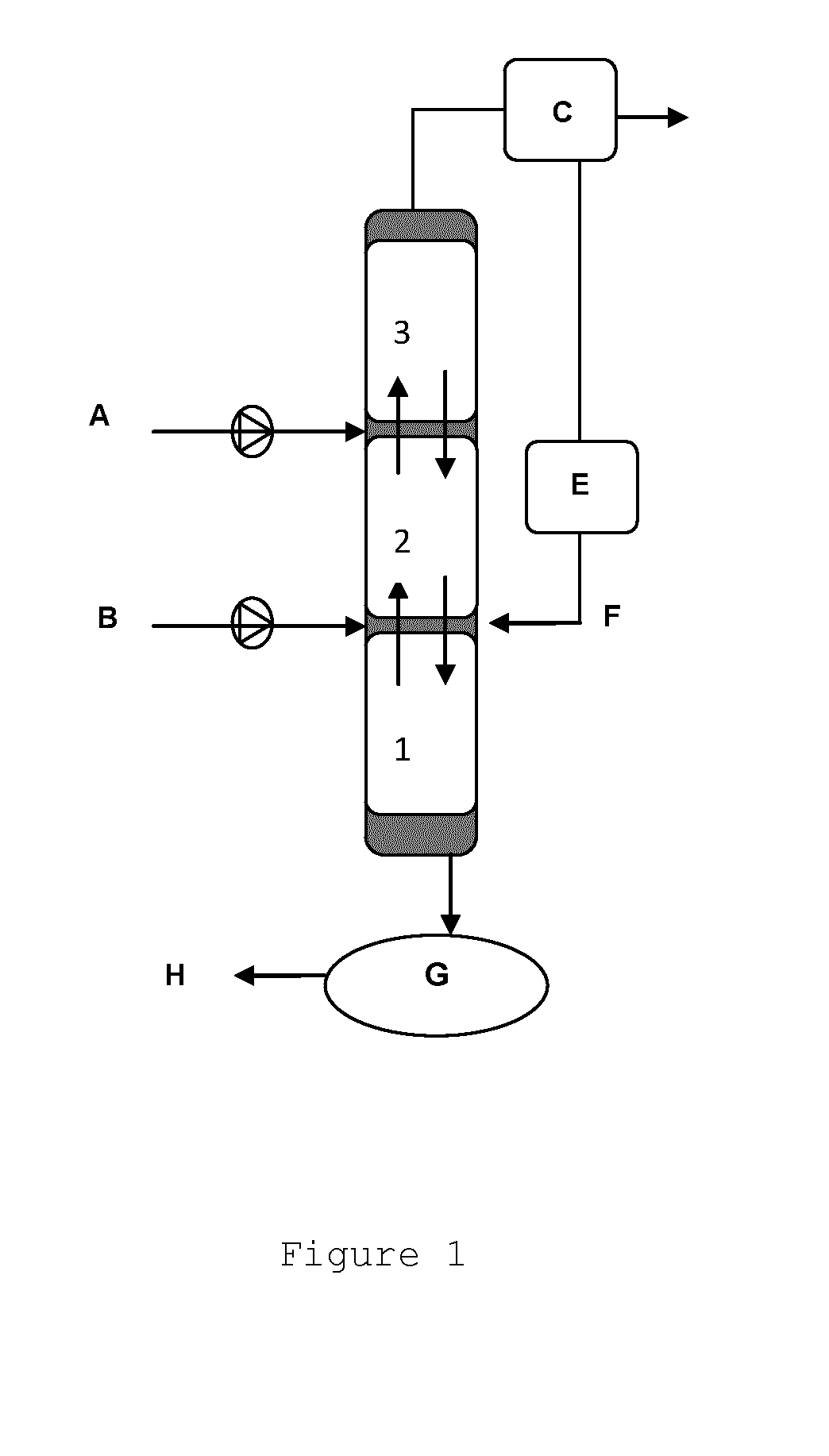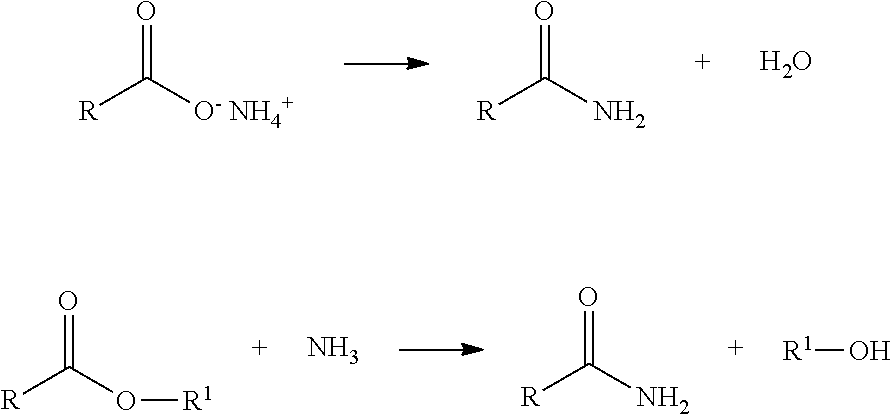Process for producing a lactic ester from a fermentation liquor containing ammonium lactate
a technology of ammonium lactate and fermentation liquor, which is applied in the direction of sustainable manufacturing/processing, separation processes, organic chemistry, etc., can solve the problems of difficult transposing a method using this pathway to an industrial scale, difficult to carry out continuous methods, and difficult to reprocess gypsum. problems, to achieve the effect of improving the stability of the produ
- Summary
- Abstract
- Description
- Claims
- Application Information
AI Technical Summary
Benefits of technology
Problems solved by technology
Method used
Image
Examples
example 1
Esterification of the Ammonium Lactate in the Apparatus of the Invention
[0039]The fermentation juice was filtered on a dicalite pre-layer in order to eliminate the biomass. The filtrate was then treated on LEWATIT 2528 cationic resins preconditioned in ammonia form in order not to exceed 20 ppm in divalent cations. The flow rate was fixed at 2 BV / h (a BV or “bed volume” corresponds to the volume occupied by the resin bed in the treatment column).
[0040]This fermentation juice is next treated by nanofiltration, with a feed rate of between 500 and 600 ml / h, on an Osmonics SEPACF2 nanofiltration pilot with a GEWATER (DL) membrane.
[0041]Finally, the fermentation juice is concentrated, in a thin-layer apparatus, at a pressure of between 90 and 120 mbar and a temperature of between 100° and 105° C. with a feed rate of 6 l / h, until a concentration of 60% is obtained.
[0042]A column corresponding to the diagram of FIG. 1 is supplied with butanol in vapour form at 120° C. at atmospheric pressu...
example 2
Esterification of a Pre-Purified Fermentation Juice in Ammonium Lactate Form into Butyl Lactate with and without Use of a Column
[0044]222 g of butanol is placed in a flask and heated to 120° C. at atmospheric pressure, and 1% of PISA (para-toluene sulphonic acid) is added. When the butanol distils, 178.3 g of a pre-purified fermentation juice in the form of 60% ammonium lactate is added drop by drop into the flask. The reaction is continued until a zero residual acidity is obtained. At the end of synthesis, the reaction product is analysed and the results are set out in table 2.
TABLE 2Characteristics of the butyl lactate producedCon-ConcentrationEsterificationLoss ofcentrationof butylyieldlactamideof water(b)Racemisationlactate(a) (%)(%)(%)(%)(%)40.677100.92(a)Determined by gas chromatography measurement(b)Determined by Karl Fisher measurement
[0045]It can be noted that the conversion of the ammonium lactate into butyl lactate is not very high and that on the other hand the loss of l...
example 3
Concentration of Fermentation Juice with and without Pre-Purification
[0050]Fermentation was carried out with ammonium neutralisation.
[0051]300 g of fermentation juice is directly concentrated in a flask. The characteristics of the concentrated fermentation juice in the form of ammonium lactate are set out in table 5.
TABLE 5Characteristics of the fermentation juice after concentrationLactic acid(a)(g / l)Lactamide(b) (ppm)Yield (%)Racemisation(c) (%)440136,000775(a)Determined by titration(b)Determined by HPLC measurement(c)Determined by enzymatic analysis
[0052]A significant formation of the lactamide by-product is observed during the concentration step.
[0053]A new fermentation was carried out with an ammonia neutralisation, this time the fermentation juice was filtered on a dicalite pre-layer in order to eliminate the biomass. The filtrate was next treated on LEWATIT 2528 cationic resins preconditioned in ammonia form in order not to exceed 20 ppm in divalent cations. The flow rate was...
PUM
| Property | Measurement | Unit |
|---|---|---|
| residence times | aaaaa | aaaaa |
| temperature | aaaaa | aaaaa |
| temperature | aaaaa | aaaaa |
Abstract
Description
Claims
Application Information
 Login to View More
Login to View More - R&D
- Intellectual Property
- Life Sciences
- Materials
- Tech Scout
- Unparalleled Data Quality
- Higher Quality Content
- 60% Fewer Hallucinations
Browse by: Latest US Patents, China's latest patents, Technical Efficacy Thesaurus, Application Domain, Technology Topic, Popular Technical Reports.
© 2025 PatSnap. All rights reserved.Legal|Privacy policy|Modern Slavery Act Transparency Statement|Sitemap|About US| Contact US: help@patsnap.com


